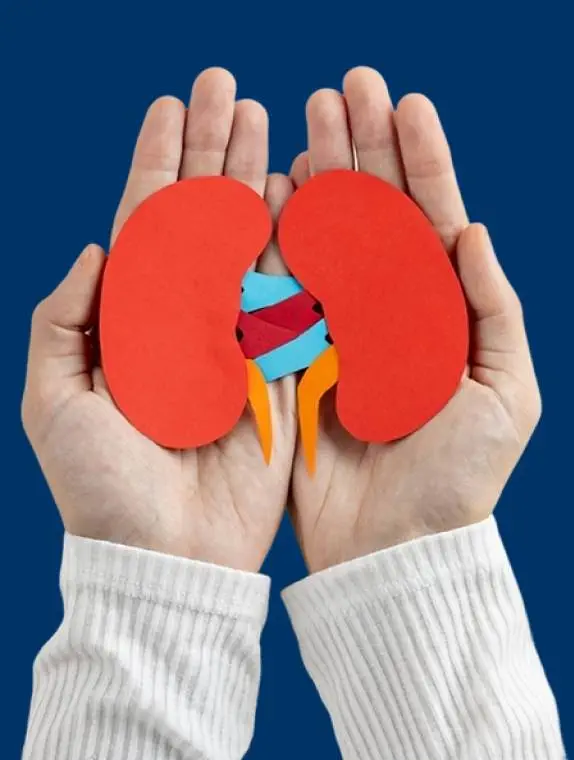Percutaneous Nephrolithotomy (PCNL)

Nephrolithotomy: Surgical Solution for Stubborn Renal Stones
Percutaneous Nephrolithotomy (PCNL) is a minimally invasive surgical procedure designed to remove large, multiple, or complex kidney stones. The last thing anyone wants to experience is the excruciating pain caused by kidney stones, which can lead to several complications. This procedure is highly effective for urinary stones that cannot pass naturally through the urinary tract, especially when other treatments have proven ineffective.
Dr. Aarthy is highly skilled in PCNL surgery, further showcasing her expertise as a leading uro surgeon. She is a highly sought-after urologist doctor in Chennai for her extensive knowledge of PCNL. She performs stone removal through a minimal incision in the patient’s back, accessing the stone’s location with the help of a Nephroscope, a sophisticated tube equipped with a camera.
Dr. Aarthy’s meticulous approach allows you to experience lasting relief and reclaim your well-being.
When is PCNL Surgery Required?
Dr. Aarthy may recommend Nephrolithotomy for these medical scenarios:
Discover the Power of Percutaneous Nephrolithotomy

- Before Surgery
- What to Expect?
- Post-Surgical Care
PCNL Procedure: What to do Before Surgery?
Your preparation is vital for your procedure’s success and smooth recovery. Here’s what you can expect:
Your PCNL surgery process commences with a thorough checkup of your physical health and vital signs. Your doctor will check your blood pressure, pulse, and body temperature to confirm whether your health can withstand surgery.
Discuss your current medication intake with your doctor. On your medication list, mention all routine and over-the-counter blood thinners and herbal supplements.
Please inform your doctor about your allergies and reactions to medications, food items, skincare products, or latex.
You may need diagnostic tests like CT scans, X-rays, and ultrasounds to assess the location and size of the renal stones.
Your doctor will advise you to refrain from eating or drinking from the night before your surgery.
PCNL Operation: What to Expect
A Percutaneous Nephrolithotomy requires a team of specialists such as an anaesthetist, urologist, and other experienced medical personnel. Here’s a quick overview of what to expect during the procedure:
You will be asked to lie on your stomach to enable easy access to the kidney. Sometimes, your doctor may ask you to lie on your back and place a cushion under your flank for accurate positioning.
Your anaesthetist will administer general anaesthesia to render you fully unconscious and pain-free during the entire procedure.
A small incision (about 1 cm or smaller) will be made in your back. Through this incision, a protective sheath will be inserted, which will then be advanced into your kidney.
A nephroscope, which is a camera-equipped device, will be inserted through the sheath to locate the stones in your urinary tract or kidney.
The located stones are broken into fragments using a laser or a shock-wave device called a Lithotripter, which makes it easy to remove from the body.
Following the removal of the stone, the urologist might place a drainage tube to assist with urine drainage and promote healing.
Finally, the small incision will be sutured close to complete the procedure.
PCNL Surgery: Post-Procedural Care
Post-procedural care is a must for all surgical procedures, and PCNL surgery is no exception. Here’s what to expect during your post-procedural period:
Your doctor will carefully bandage your stitches to safeguard the incision sites and promote healing.
As the anaesthesia wears off, you will gradually regain consciousness under the close supervision of medical staff.
You will be moved to a recovery room, where healthcare professionals will monitor your vital signs and overall condition to ensure a safe and complication-free recovery.
Your doctor may recommend a day’s stay at the hospital to observe you and ensure your recovery is free of complications.
The extracted kidney stone fragments will be sent to a laboratory for analysis. Understanding their composition helps identify the underlying causes and plan preventive measures.
It is normal to notice blood in your urine for up to two weeks after the surgery. This typically resolves on its own without intervention.
Benefits of PCNL

Minimally Invasive
PCNL involves small incisions instead of the large cuts required in traditional open surgeries. This leads to quicker recovery times, less postoperative discomfort, and smaller scars.
Stone Clearance Rates
Direct access to the kidney facilitates more precise visualisation, easy access, and uncomplicated removal of kidney stones.
Lower Morbidity
Compared to open surgery, PCNL has a significantly lower risk of complications, such as infections, due to the use of smaller incisions and advanced techniques.
Clear Stone Visualisation
The use of a nephroscope equipped with a camera provides a clear view of the stones and their surrounding anatomy, allowing the surgeon to accurately locate and extract the stones.
Minimises Additional Procedures
PCNL’s high success rate minimises the likelihood of requiring further treatments for stone removal, offering a comprehensive solution in one procedure.
Book Your PCNL Consultation Today







